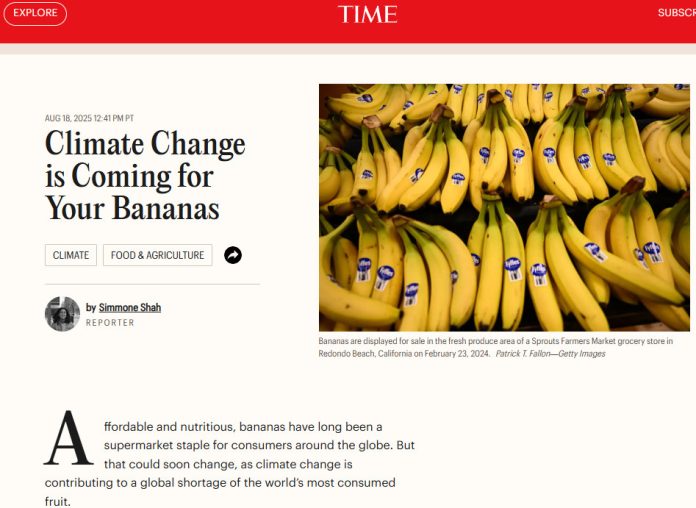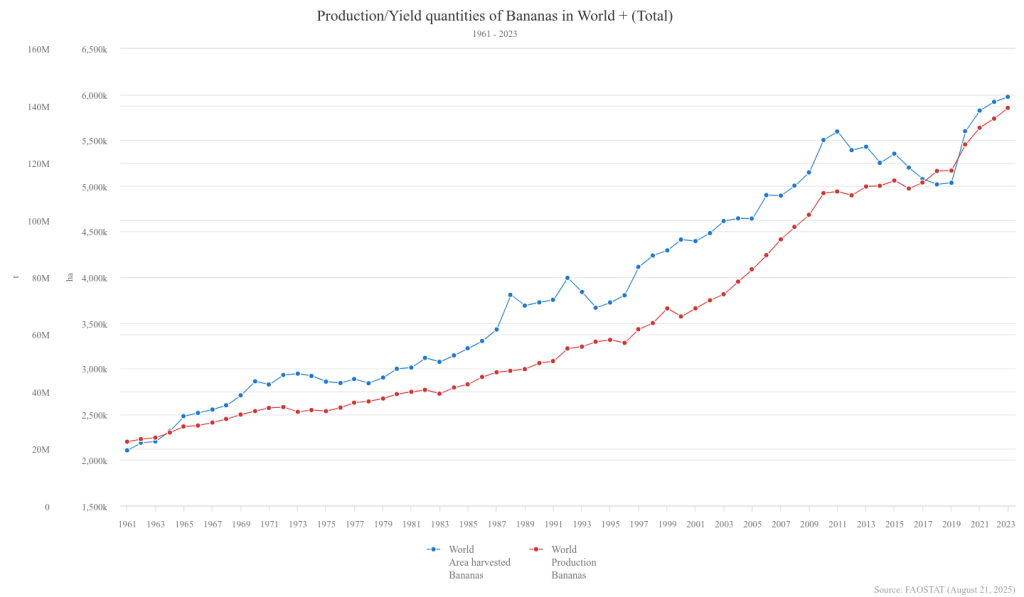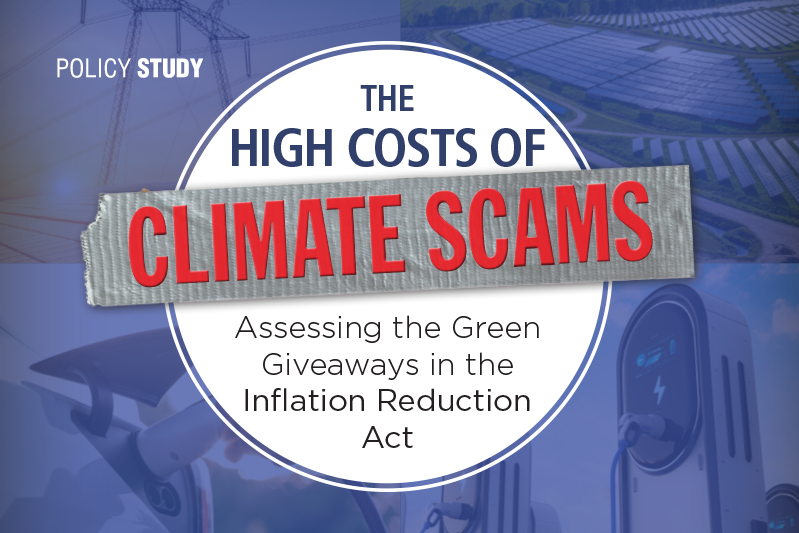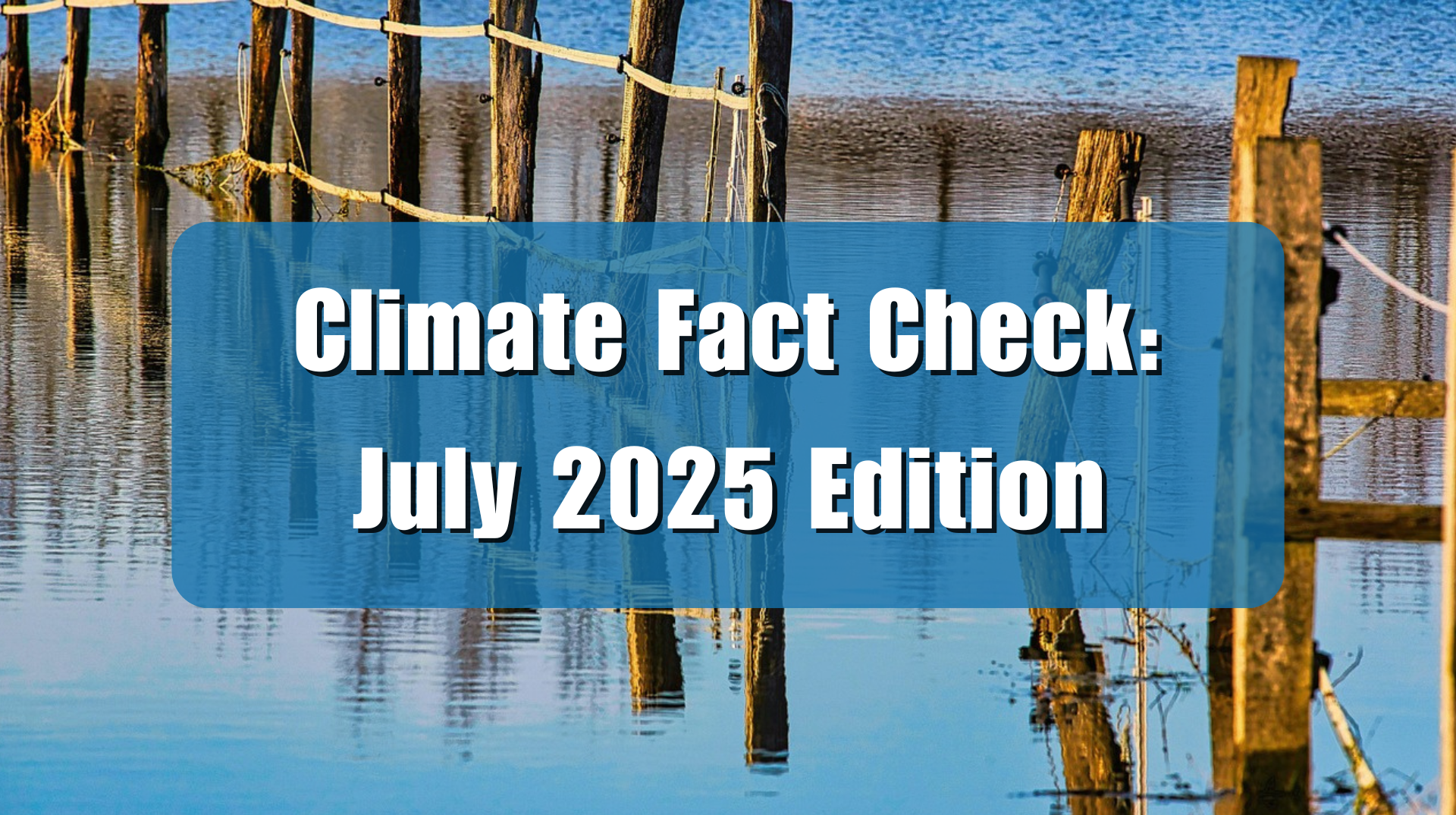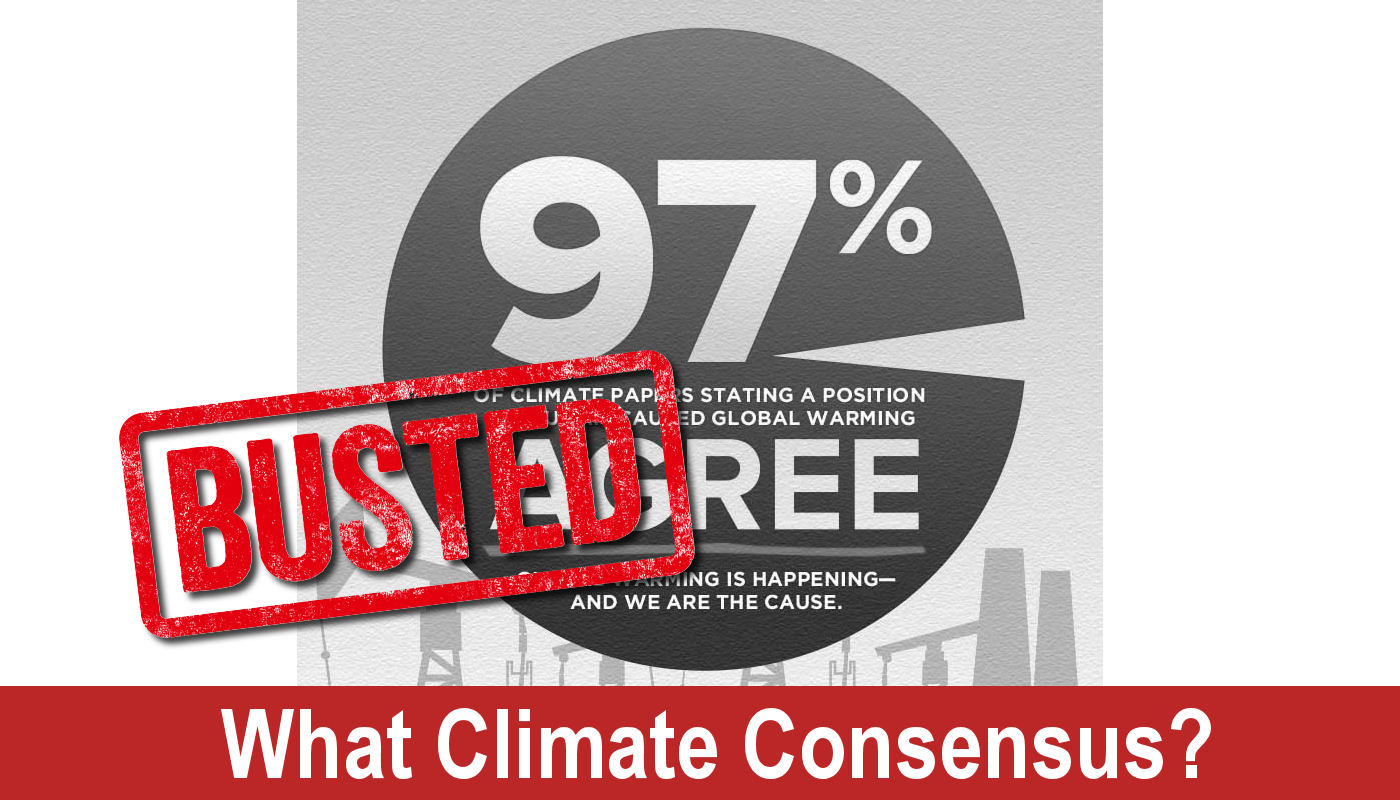By Anthony Watts and H. Sterling Burnett
A recent article in TIME Magazine, “Climate Change is Coming for Your Bananas,” claims that a warming planet is threatening global banana production, portending shortages and higher prices. This is false. Data and the history of banana cultivation all tell a different story, with yields and production numbers from the regions highlighted in the story setting new record highs in recent years.
TIME dramatically blames climate change for banana yield loss and diseases:
But in a world that is getting warmer and more chaotic, climate change is already threatening the future of bananas, the world’s most popular fruit. Extreme weather events, shifting rainfall patterns, and rising temperatures are causing yields to fall and diseases to spread in banana-growing regions from Central America to Africa to Southeast Asia.
This is not the first time Climate Realism has had to debunk a story by TIME claiming that climate change was causing crop declines.
Bananas are not delicate climate “canaries in the coal mine,” perched on the edge of collapse due to a degree or two of global warming. Bananas are a remarkably robust tropical crop, grown in more than 150 countries across an immense range of temperatures (though mostly hot), humidity, rainfall, and elevation. While most commercial exports come from equatorial regions, bananas are grown from the humid lowlands of Central America to the hilly, cooler regions of Africa and Asia.
The key point is that bananas have persisted through centuries of variable weather, global warming and cooling episodes, and even El Niño cycles more dramatic than anything seen in the past few decades. If bananas were as sensitive as TIME claims, we wouldn’t see them thriving from Uganda to India, from Brazil to the Philippines.
In fact, according to the UN’s Food and Agriculture Organization (FAO), world banana production has more than a 8 fold increase since 1961, rising from about 22 million tons to over 129 million tons in 2023. As the FAO chart below illustrates, there has never been a period of sustained collapse. Instead, the data show robust growth—despite “shifting climate patterns.”
Examining the banana growing regions TIME particularly identified as having their banana crops threatened by climate change, contrary to TIME’s claims, FAO data show banana harvests have regularly set records for yield and production 1994 through 2023, the last year for which data is available:
- African banana production has grown more than 312 percent on yield gains of nearly 84 percent, with the most recent records for yields and production set in 2023;
- Central American banana production increased by approximately 60 percent on yield gains of more than 33 percent;
- And, South East Asia’s banana output expanded by about 91 percent and yields grew by almost 86 percent. (see the graph, below)
TIME’s false story of banana collapse leans heavily on the specter of crop disease, specifically Panama Disease (Fusarium wilt), saying: “Now, as climate change accelerates, the fungus [Panama Disease] is spreading more rapidly, devastating banana farms in Asia and threatening to reach Latin America, which supplies most of the world’s exported bananas.”
This is extremely misleading. Panama Disease’s spread is not due to climate change—it’s a consequence of monoculture and global trade. The disease was first identified in the 1870s, when the planet was notably cooler than today. Its spread in the modern era is entirely due to the movement of contaminated soil, tools, and plant material between farms and continents—a byproduct of globalization, not the weather.
In fact, the International Institute of Tropical Agriculture specifically points out, “climate change has not been identified as a primary driver of Fusarium wilt outbreaks.” Instead, biosecurity lapses, monoculture, and poor agricultural practices are the main culprits. If TIME were serious about banana security, they’d be calling for genetic diversification and better quarantine measures—not virtue signaling about carbon dioxide emissions.
TIME’s article repeatedly invokes “extreme weather” and “shifting rainfall” as existential threats. Yet, the reality is that bananas, like most tropical crops, have always endured cycles of droughts, floods, and storms. Historical records show that cyclones and variable rainfall have always been part of the tropical banana-growing environment. If these events were truly new or worsening, we would see unprecedented declines in production. The opposite is true: global production is at record highs.
Even the Intergovernmental Panel on Climate Change notes that while some regions may see local shifts in agricultural productivity, there is no evidence of a catastrophic, global-scale collapse in tropical crop production due to climate change. Farmers, as always, are adapting new varieties, bettering irrigation, and applying improved agronomy techniques, which result in better yields and better resilience to weather.
TIME’s reporting on bananas fits a tired template: find a problem; blame human caused climate change; ignore other more relevant factors and any solutions that don’t involve remaking the world’s economy by limiting fossil fuel use. Concerning bananas, TIME ignores real world data that show record output of the past decades, rather than decline or collapse, and misstates the scientific evidence about why the plant disease they’ve identified as a threat to bananas has spread.
The next time you read that climate change is coming for your favorite fruit, remember to check the data and the history. You’ll almost always find that the real threats are overstated or misidentified by the media, and that poor policies and monoculture are the sources of the problem, not a thermometer creeping up by a degree. If TIME were honest and truly concerned about informing the public, they’d truthfully report on long-term trends, focus on solutions that work, and not promote alarming climate change clickbait.
















